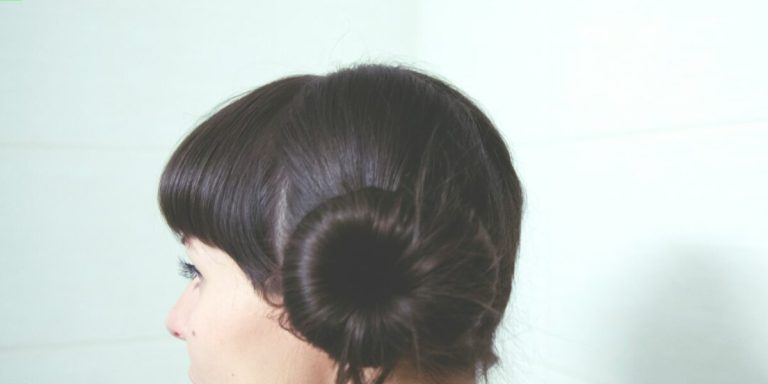Laser Treatment for Hair Loss: A Comprehensive Guide
“Laser treatment for hair loss” has emerged as a promising solution in the world of trichology, offering hope to millions suffering from receding hairlines and bald patches. The advent of laser technology in this realm is a testament to advancements in medical science aiming at effectively combating alopecia – a problem that strips one not just off their tresses but also self-confidence.
Hair loss can be an emotionally draining experience, leaving people desperately searching for reliable treatments. Laser therapy, being non-invasive and boasting clinically proven results, comes forth as an exciting alternative worth considering. This guide aims to provide comprehensive information about how it works so you’re informed before making any decisions regarding your journey towards regrowth.
Did you know?
Contrary to popular belief, Low Level Laser Therapy (LLLT) for hair loss is not a new invention. In fact, it has been in use since the 1960s when Hungarian physician Endre Mester first discovered its healing properties on mice’s skin and fur.
Understanding Laser Treatment for Hair Loss
Laser treatment, specifically Low-Level Laser Therapy (LLLT), is a clinically proven method for treating hair loss. It has gained much traction in recent years as an effective non-surgical approach that promotes the revival of thinning and dormant hair follicles Using light energy directly irradiated onto the scalp, it enhances cell metabolism rate and stimulates blood flow.
Known to be an FDA-approved therapy, laser treatment stands out due to its convenience and lack thereof side effects usually associated with other medicinal treatments. The process involves devices such as combs or helmets equipped with lasers emitting low levels of light in specific wavelengths typically between 600 to 1000 nanometers which stimulate cellular activity within weak hair follicles thereby promoting healthier growth patterns.
So if you’re looking at alternatives beyond medication for combatting baldness or diffused thinning without resorting to invasive procedures like transplants, then LLLT could be just what Doctor Soulphany ordered.
The Science Behind Low-Level Laser Therapy (LLLT)
Low-Level Laser Therapy, often abbreviated as LLLT, has emerged as a promising solution for dealing with hair loss. It’s based on the principle of photobiology, where light energy is absorbed by cells leading to increased cellular activity and endowing them with an enhanced ability to grow.
First off, it’s important to understand that LLLT doesn’t involve any kind of powerful surgical lasers. Instead, we’re talking about “cool” or low intensity lasers here – hence the name Low-Level Laser Therapy. The technology taps into wavelengths in the red infrared range of the spectrum (630-670 nanometers) known best for their tissue healing properties.
So how does this tackle our enemy – hair loss? Well let me shed some light!
When you undergo a session of LLLT treatment focused on your scalp area affected by balding or thinning hair – cool laser devices bathe these areas in photon particles commonly associated with visible red light. These particles penetrate down through several layers right up until they reach your inactive follicles responsible for producing new strands.
These dormant follicles absorb the incoming wave of photon energy and become stimulated, which leads to:
- Increased cell metabolism within each follicle.
- Two notable outcomes that will be described next.
1: Rejuvenation: First thing you’ll notice around 4 weeks post-treatment is a reduction in shedding rate accompanied by healthier looking existing hairs both correlating towards slowing progressiveness patterned alopecia poses.
Comparing LLLT with Other Hair Restoration Methods
When it comes to hair restoration methods, there’s a diverse array of options available. From surgical procedures like hair transplants to non-invasive therapies such as low-level laser therapy (LLLT), each treatment offers unique benefits and drawbacks.
Low-level laser therapy has taken center stage in recent years due to its minimally invasive approach towards treating baldness or thinning hair. This technology utilizes specific light wavelengths from lasers or LED devices that are believed to stimulate cellular activity within the follicles, leading to an increase in blood circulation and nutrient delivery toward these areas.
- Skin irritation
- Unwanted facial hair growth, especially in women
In contrast, Low-Level Laser Therapy (LLLT) is pain-free with no downtime. Surgical options, however, entail a more extensive process involving:
- Several weeks of post-procedure recovery time
- Risks associated with stress on donor areas where hairs are harvested during transplantation
Next up we have platelet-rich plasma (PRP) injections – another increasingly popular procedure leveraging growth factors derived from one’s own blood but requiring repeated sessions over few months thereby offering potentially longer-lasting improvements yet accompanied by considerable higher costs than LLLT procedures overall.
Another alternative includes finasteride oral tablets noted for preventing further male pattern baldness although users must continue taking medication indefinitely whilst being aware about certain adverse effects linked with sexual functionality amongst some men.
Evaluating the Effectiveness of Laser Hair Growth Devices
Laser treatment for hair loss has emerged as a widely acclaimed method in combating the menace of dwindling tresses. As technology continues to evolve, advances are also seen in medical and aesthetic practices which include treatments aimed at augmenting hair growth. The introduction of laser-based devices is surely an embodiment of this progress.
To truly assess their effectiveness, it’s imperative to delve into what these devices offer. Essentially, they utilize low-level laser therapy (LLLT), directing light energy on your scalp that purportedly stimulates follicles and boosts cellular activity leading to improved hair growth. It’s non-invasive yet powerful enough to penetrate below the skin surface without causing any potential harm or discomfort.
However, while many users have reported positive results post usage of these gadgets – from increased thickness to noticeable new hair sprouts within months; others were less jubilant about its outcomes citing little change even after regular sessions over extended periods. This disparity emphasizes how individual responses may vary significantly due largely owing not just genetic predispositions but other factors like severity and type of alopecia condition treated too.
Analyzing Clinical Studies and User Testimonials
In unraveling the effectiveness of laser treatment for hair loss, understanding both clinical studies and user testimonials is essential. The two offer complementary views; while clinical trials provide scientific evidence on safety and efficacy, personal experiences give us an inside look into a real-life application which may resonate more with potential users.
Clinical research has been pivotal in highlighting the benefits associated with laser therapy for hair loss. A multitude of peer-reviewed articles published over recent years consistently affirm its positive impact even among individuals who had previously found little success with other treatments. These sophisticated pieces of technology work by emitting a low level light that stimulates scalp tissue – essentially sparking new life into otherwise dormant or underperforming follicles.
A representative study conducted at Harvard Medical School observed significant improvement in both men’s and women’s hair density after only four months of use. Furthermore, they noted less shedding throughout this period – demonstrating immediate as well as longer-term effects from these devices.
Additionally, another notable mention goes to a randomized double-blind placebo-controlled trial carried out amongst 128 male participants displaying early stages of pattern baldness. This comprehensive research highlighted greater improvements within test subjects treated via lasers compared to controls given sham treatments; accentuating their potential role within contemporary solutions addressing premature balding concerns.
While these empirical findings are indeed promising, many prospective customers seek validation through shared experiences before investing in such products themselves.
Criteria for Determining the Success Rate of Hair Regrowth Treatments
As we navigate the world of hair loss treatments, one method that captures a lot of interest is laser treatment. The effectiveness and success rate become crucial points to delve into when considering this procedure. In order to objectively evaluate these aspects, consider several criteria.
Firstly, understand what success means in terms of hair regrowth treatment. It doesn’t merely imply attaining a full head of hair but it also entails stopping further loss and strengthening existing follicles.
One significant benchmark for assessing the efficacy is observing noticeable growth within three to six months post-treatment—a reasonable time frame given our body’s natural pace at which it directs energy towards restoring lost hairs.
Another important aspect lies in customer testimonials and reviews – they offer real-life experiences from individuals who’ve been through similar journeys with their personal pros and cons—positive feedback tends to validate product claims about its effectivity.
Scientific research should not be overlooked either—the latest studies as per 2023 reveal compelling evidence supporting low-level laser therapy (LLLT) as an effective non-invasive approach against patterned baldness issues like Androgenetic Alopecia (AGA). We recommend leaning on credible scientific sources while weighing your options—it boosts confidence knowing there’s solid science backing your chosen path forward!
Practical Considerations Before Undergoing Laser Treatment for Hair Thinning
For many, hair loss can be a daunting reality that negatively impacts their self-esteem and confidence. Thankfully, advancements in technology have provided various solutions to address this issue head-on – one such solution being laser treatment for hair thinning. However, there are practical considerations you must take into account before taking the leap.
Firstly, it’s essential to understand what laser treatment entails and how it aids in combating thinning locks. This non-invasive procedure works by using low-level light therapy (LLLT) directed onto your scalp stimulating cellular activity within the follicles – which is known as photobiomodulation. As 2023 has seen significant developments in LLLT technology’s efficiency and safety standards; more individuals find themselves considering this option over invasive techniques or supplement use.
Patience is key during laser treatment for hair thinning since results don’t appear immediately. You may need multiple sessions, spread over weeks or months, based on your hair loss severity. Thus, coordinating treatments with your personal schedule is essential for a successful journey to fuller hair. Understanding these factors can clarify if laser regrowth stimulation is right for you.
Assessing Costs, Time Commitment, and Maintenance
When considering laser treatment for hair loss, three important factors should be at the forefront of your mind – Costs, Time commitment and Maintenance. Let’s discuss each in detail.
However, this is not a complete representation of total expenditure as most individuals require multiple sessions over several months before noticeable results are seen. Though insurance companies do not typically cover these treatments as they deem it cosmetic rather than medical necessity but some clinics offer financial plans making it accessible for many people struggling with hair thinning issues.
Secondly comes time investment which could prove demanding especially if juggling between busy work schedules or personal commitments because regular appointments spaced every few weeks will be required since consistency is key for optimal results when undergoing this kind of therapy.
One session usually takes about 60 minutes approximately without factoring in travel time to and from the clinic premises during traffic peak hours reducing productive life/business activities’ times tremendously.
Choosing Between At-Home Devices and Professional Clinic Sessions
Deciding between using at-home devices for hair thinning and opting for professional clinic sessions is a critical decision that can greatly affect the results of your laser treatment. When considering this, there are several key points to keep in mind.
At-home laser therapy devices come with their own pros and cons; they allow flexibility as you’re able to use them whenever it suits you best without needing an appointment at a specialist clinic. However, these tools are generally less powerful than those found in clinics and might take longer time periods before any visible improvement becomes apparent.
On the other hand, receiving treatments at professional clinics assures higher power settings thus potentially leading to quicker noticeable improvements over shorter durations compared with home-use devices. Notably though such sessions reciprocate by demanding relatively more cost per session along with travel commitments each visit requires.
Additionally remember that regardless whether choosing convenience or intensity both types involve commitment towards frequent usage regularly across months so choose accordingly once convinced about which route works better.
Drawbacks aside FDA has approved certain brands providing home-treatment lasers endorsing safety provided instructions manual followed religiously even among first-time users quelling concerns related misuse causing unintended harm facilitating DIY attempt confidently.
Conclusion
In summarizing, laser treatment for hair loss presents as a innovative technique that can mitigate the effects of thinning and balding. It’s non-invasive nature coupled with proven efficacy has made it an increasingly popular choice among both men and women battling hair loss issues.
While no method guarantees absolute success, exploring all avenues is key to confronting this often distressful condition head on. Feel free to browse around our website where we shed light on various other facets surrounding “Hair Loss Treatments”. Equip yourself with knowledge to make informed decisions about your journey towards healthier locks!







